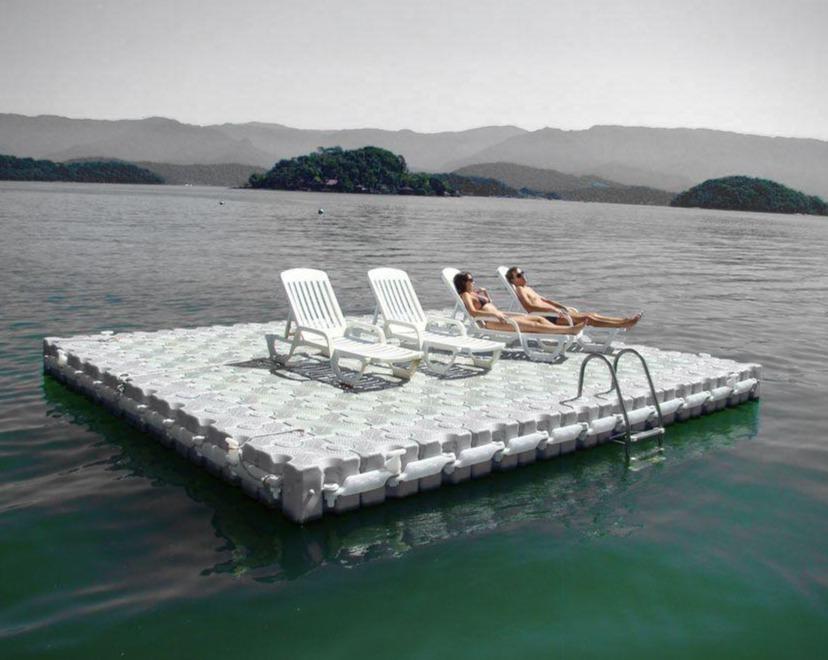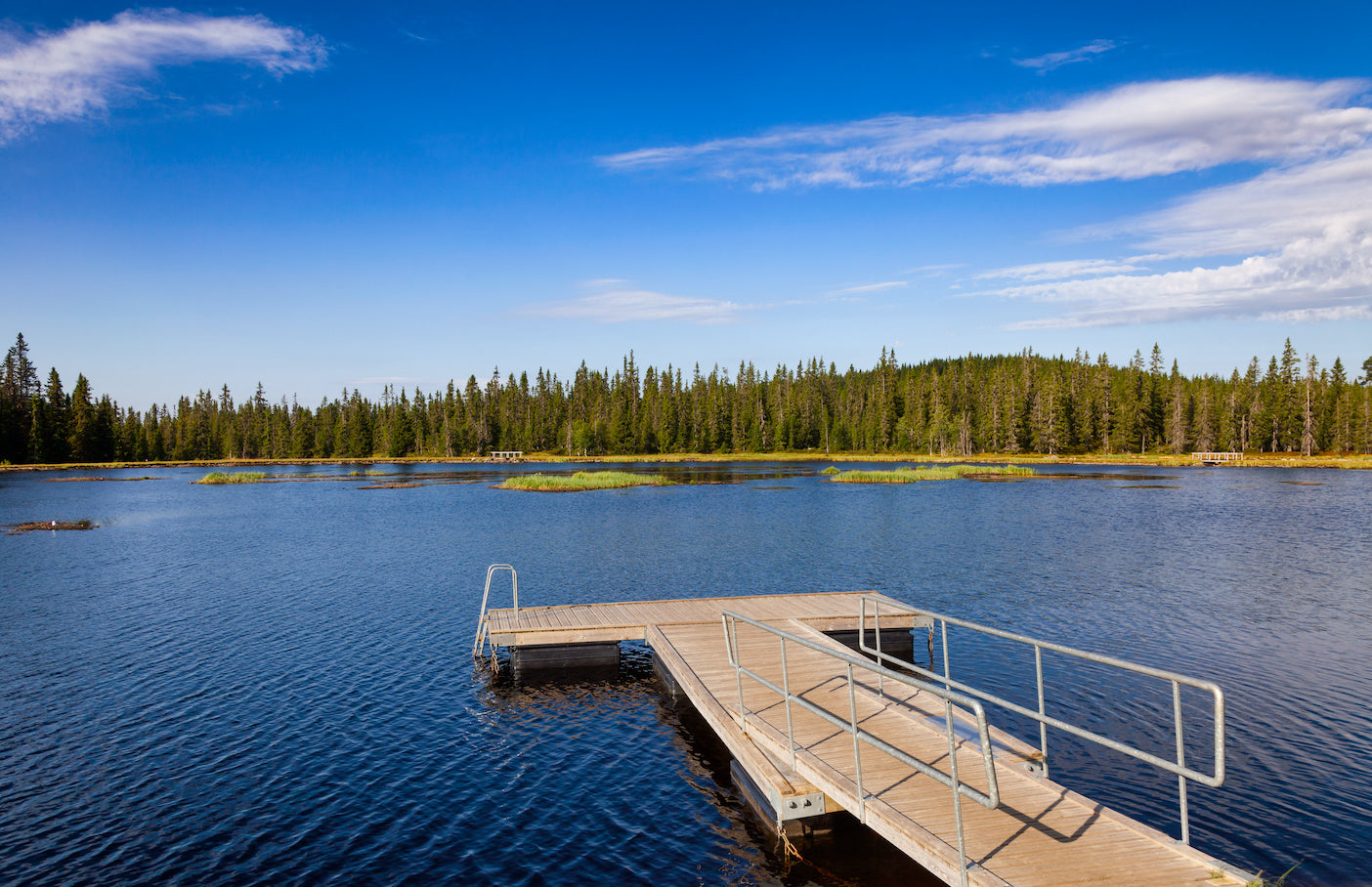Produce the Perfect Docking Solution With Floating Docks
Floating docks existing a versatile solution for a selection of maritime demands, adapting effortlessly to fluctuating water degrees and diverse vessel types. As we discover the necessary components that add to the effectiveness of floating docks, a number of crucial variables regarding security and maintenance will emerge, increasing concerns concerning just how to enhance your docking experience.

Benefits of Floating Docks
Floating docks deal various benefits that make them a suitable choice for numerous maritime applications. Unlike taken care of docks, floating docks surge and fall with the tide, making certain consistent ease of access for vessels.
Additionally, floating docks are typically less complicated and quicker to install compared to standard set frameworks. Their modular layout allows for simple assembly and disassembly, assisting in upkeep and relocation when required. This adaptability is especially helpful for short-term applications or in environments where conditions may transform.
Floating docks additionally tend to be more environmentally pleasant, as they minimize disturbance to the seabed and bordering water communities. Their resilient nature decreases the danger of damages to aquatic life, advertising a much healthier environment. Moreover, these docks can be personalized to suit different vessel dimensions, making certain that they meet details functional needs - floating dock services.
Eventually, the mix of adaptability, simplicity of installment, and ecological considerations makes floating docks an extremely efficient solution for a vast array of maritime needs.
Selecting the Right Materials
Choosing the appropriate products for floating docks is essential to make certain longevity, long life, and security. The choice of products straight influences the dock's performance in various environmental conditions, consisting of direct exposure to water, sunlight, and possible wear from aquatic web traffic.
Typical materials used for floating docks include aluminum, wood, and high-density polyethylene (HDPE) Light weight aluminum is light-weight, corrosion-resistant, and calls for marginal maintenance, making it an outstanding option for longevity. Nonetheless, its first cost can be greater compared to other products.
Timber, while cosmetically enticing and giving a traditional look, can be vulnerable to rot and bug damages otherwise effectively treated. Making use of pressure-treated timber or naturally sturdy varieties like cedar or redwood can mitigate these issues.
HDPE is a preferred selection due to its resistance to UV rays and chemicals, along with being eco-friendly. floating dock company. It is offered and lightweight in numerous shades, permitting personalization
Ultimately, the right product choice will certainly depend upon particular demands, including budget, preferred aesthetic appeals, and ecological factors to consider. Mindful examination of these variables will result in a effective and durable floating dock solution.
Layout Factors To Consider for Stability
When developing floating docks, guaranteeing security is a fundamental facet that can considerably influence their functionality and security. Stability in floating dock design is affected by numerous elements, including buoyancy, weight circulation, and the plan of elements.
Weight circulation is crucial; uniformly dispersing tons across the dock avoids tilting and improves security. Larger layouts can supply increased stability, particularly in harsh water conditions, while longer docks might require added assistances to protect against drooping.
An additional key factor to consider is the ecological effect, consisting of wave activity and wind. Incorporating functions such as sidewalls or skirting can assist mitigate the effects of environmental forces, maintaining security in damaging problems. Inevitably, a combination of thoughtful style, product choice, and understanding of ecological variables will generate a drifting dock that satisfies both security and security needs.
Setup Tips and Methods

Following, protect the required licenses and stick to local guidelines, which may dictate setup approaches and ecological considerations. Involve a qualified professional experienced in floating dock setups if required. Usage premium materials developed for marine environments to improve resilience and long life.
When positioning the dock, straighten it alongside the shoreline to assist in easy gain access to. Make certain that the anchoring system is durable, utilizing concrete blocks or helical anchors to maintain the dock against wind and wave activity. It's essential to make up seasonal water level fluctuations, consisting of possible ice activity in chillier environments.
Throughout the setup, ascertain the dock's floatation and stability before wrapping up the anchoring. Consistently check the installment for any kind of indications of wear or damages. By complying with these ideas and techniques, you can accomplish a secure, useful, and cosmetically pleasing floating dock setup that satisfies your demands.
Upkeep and Treatment Guidelines
Preserving and caring for floating docks is critical to prolonging their life-span and making sure risk-free usage. Normal evaluations ought to be conducted to recognize any type of signs of wear, damages, or marine development. Try to find fractures, see here now loose installations, or stained areas on the dock's surface area, as these problems can endanger structural stability.
Cleaning is essential. Make use of a pressure washer to remove algae, barnacles, and debris, which can collect gradually. For persistent growth, think about eco-friendly cleaner that will not hurt water life.
Additionally, inspect the mooring lines and anchors frequently to ensure they are free and secure from corrosion. Change any type of torn or harmed lines promptly to preserve security.
During extreme weather condition, such as tornados or freezing conditions, take precautionary procedures. Secure the dock with added mooring lines and, if viable, get rid of any type of detachable elements to avoid damages.
Final Thought
In final thought, the application of floating docks provides a versatile and reliable docking solution suitable for different maritime applications. With appropriate setup and routine upkeep, floating docks can offer reliable and reliable docking experiences for a vast range of vessels.
As we explore the essential elements that add to the efficiency of floating discover this info here docks, several key variables regarding stability and maintenance will certainly arise, raising questions concerning just how to maximize your docking experience. Unlike fixed docks, floating docks increase and fall with the tide, guaranteeing regular availability for vessels.When developing floating docks, making certain security is a basic aspect that can considerably influence their functionality and safety and security. Stability in floating dock style is influenced by numerous elements, including buoyancy, weight distribution, and the setup of page components. Eventually, a combination of thoughtful design, product choice, and understanding of ecological variables will produce a floating dock that meets both stability and safety demands.